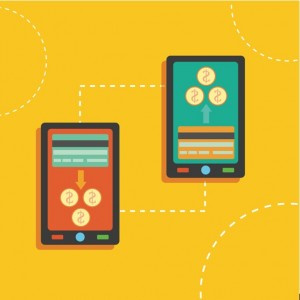Digital wallet technology is still in its infancy, but with each passing day more and more consumers are making the move toward digital transactions. Although the data is scarce, a recent Gallup Poll suggests that as much as 30 percent of smartphone users are using digital wallets to complete a majority of their monthly transactions. As more retail stores and financial institutions add support for Apple Pay, Google Wallet and PayPal, it’s likely that the number of consumers using these platforms will also grow at a rapid pace. Without a doubt, digital wallets add a level of freedom, convenience and uniformity that simply isn’t available with a handful of cash or stack of credit cards. However, they also come with whole new set of problems, especially when it comes to fraud and identity theft. The burden to protect sensitive information rests mostly on the individual consumer, but businesses can take certain measures to protect their customer base from unwanted intrusions. Here are just a few ways you can protect your customers in the digital wallet age.
Digital Wallets are a Two-Way Street
Digital wallet security starts with an understanding of how they benefit both consumers and business owners. When credit cards started to gain popularity in the 1970s, they were basically a status symbol, a chance to flash some plastic with your name on it at a fancy restaurant. People rarely made large purchases with credit cards, and they were accepted at so few places that security wasn’t a priority. Digital wallets have the opposite problem. The technology is available to anyone with a smartphone. That’s millions of users with a convenient way to make purchases in stores, online or in the middle of a forest. For business owners, it’s in your best interest to advocate for what amounts to a new revenue stream, and that means taking an active role in digital wallet security.
Know the Vulnerabilities
Unlike an actual wallet, digital wallets typically require two kinds of authentication to open. In addition to the typical lockscreen passcode, Apple Pay also requires fingerprint authentication at the point of sale. That removes a fair amount of vulnerability, but it isn’t foolproof. The majority of reported digital wallet intrusions tell a similar story. An unlocked smartphone was stolen, allowing the perpetrator to go into the settings and change the verification settings. He simply adds himself to the phone’s user profile. This only takes a few moments, so by the time the phone’s owner realizes the phone is gone, it’s already too late. Identity thieves can also use a digital wallet to archive all of the physical credit cards they’ve stolen. Credit card companies have upped the verification process for adding cards to a virtual wallet, and business owners should do the same when making a sale. You can never know if a phone has been hijacked, but you can certainly ask for additional identification to ensure that it matches the credit card information.
Educate Your Customers
As Lifelock reports, more than 97 million Americans own smartphones, and 6.6 percent of these owners have reported that they were victims of identity fraud. Will this number go up as more smartphone users make the jump to digital wallets? This will most likely depend on how educated consumers are about digital wallet use. Business owners should take steps to remind their customers of the importance of good security habits, like using secure passwords and only making digital wallet transactions through trusted sources. It’s a brave new world, and consumers and business owners are in it together.








